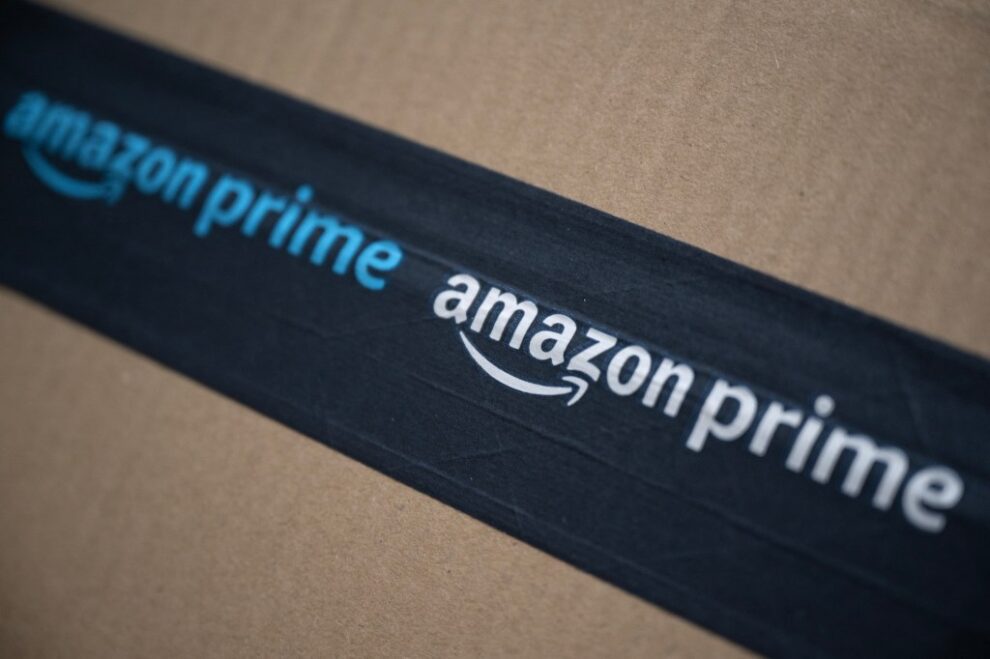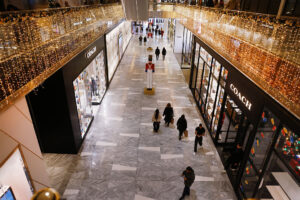What’s the fallout from the Saks-Neiman Marcus combination?
After a years-long pursuit, and endless speculation, Richard Baker’s Hudson’s Bay Co. is said to have reached a definitive agreement to buy Neiman Marcus Group for about $2.65 billion, bringing the luxury department store together with Saks Fifth Avenue, according to sources familiar with the transaction.
In a digital age twist, Amazon is an investor in the deal, as are private equity giant Apollo and Salesforce.
Saks and Neiman’s have been in talks to merge many times over the years, but the latest negotiations began last summer. The Wall Street Journal on Wednesday reported details of the final agreement, which will still be subject to approval by the Federal Trade Commission, which has grown more assertive.
As recently as two weeks ago, sources said the price tag on Neiman’s was $3.1 billion, but at least some of the financial players around the deal were worried over the marriage of two retailers that are still looking to find their footing in a challenging retail climate.
One source said that Apollo wanted a co-investor in the deal to “really pony up and stand side by side with them”—and that’s the role Amazon ultimately played.
The deal would seem to give the e-commerce giant a new foothold in luxury fashion, a space that’s been hard for the “everything story” to navigate despite the launch of the Amazon Luxury Stores platform dedicated to high-end style. However, many observers question whether major luxury labels that sell to Saks and Neiman’s will be willing to have Amazon carry their products since they have resisted the e-tailer’s overtures for years.
“I think it’s their way to try to get into the luxury space and legitimize their entry into luxury,” the source said of Amazon’s involvement.

Saks and Neiman’s as well as Amazon and Apollo did not respond to Sourcing Journal sister publication WWD’s queries ahead the Fourth of July holiday. Salesforce did not respond to a request for comment.
Chatter over a marriage of the two luxury retailers went into overdrive when HBC bought Saks Fifth Avenue eleven years ago, and its chairman and chief executive officer Richard Baker instantly made no secret of the fact that he wanted to add the Neiman Marcus Group to the portfolio and create a U.S. luxury retail empire.

There’s a case for putting the two together into one group. The new entity is expected to be called Saks Group, sources said, with current Saks CEO Marc Metrick running the operation.
First and foremost, millions of dollars in cost savings would be attained by centralizing and eliminating duplicative functions, such as accounting, planning, human resources, legal, and distribution facilities. There could be one online buying team for both retail brands, and further consolidations and savings could involve closing some stores and reducing rents. Ultimately, the headcount could shrink by several hundred, if not in the thousands.
Secondly, there would be a sharing of data, best practices, management talent, and a common customer base. Merging loyalty programs is a possibility. For example, using each retailer’s credit cards to shop could earn points valid at both Saks and Neiman’s. Or spending enough at either store could lead to access to invitation-only events at both Saks and Neiman’s.

Third, there could be a greater differentiation between Saks and Neiman’s, and reduced overlap of merchandise, which is extensive. A former executive at Bergdorf Goodman, which NMG owns, estimated that among the true luxury brands, there’s been about 90 percent overlap. Saks already emphasizes a wider range of categories and price points and has been more aggressive online with the split of the retailer into the online operation Saks and its brick and mortar business Saks Fifth Avenue, while Neiman’s has said it is refocusing on its wealthiest customers.
The combined entity would have greater leverage over vendors, particularly smaller ones more dependent on Saks and Neiman’s, more so than giant multinational luxury conglomerates such as LVMH Moët Hennessey Louis Vuitton that are less dependent on wholesaling. At the same time, a combined entity, with a strong balance sheet, could bring greater opportunities to vendors and a willingness to test new vendors.
According to the Green Street real estate research firm, there are eight malls that have both a Saks Fifth Avenue and Neiman Marcus store, including the Somerset Collection in Troy, Mich.; the Fashion Show mall in Las Vegas, and Bal Harbour Shoppes in Miami. Decisions could be made on closing the weaker of the two in certain locations, benefiting the remaining store. Neiman’s generally operates larger, more productive locations with more dominant designer presentations than Saks. But Saks captures a wider spectrum of the population with its broader range of prices and offerings.
“If Saks bought Neiman’s, they would have to more sharply differentiate,” said one luxury source, who suggested Neiman’s could focus more on high-priced designers and selling to the most affluent consumers, while Saks could double down on accessible luxury.
Following conclusion of the deal, the Federal Trade Commission and the antitrust division of the Justice Department might be all over it, and possibly block it over concerns about the potential for HBC to raise prices, close stores, lay off workers and increase pressure on vendors. Recent history shows that these federal agencies have challenged transactions involving well-known businesses in other industries, such as Microsoft, Meta, American Airlines and JetBlue, but also in fashion/retail, with the FTC blocking Tapestry Inc.’s $8.5 billion deal to buy Capri Holdings—which would create an accessible handbag giant with Tapestry’s Coach and Kate Spade and Capri’s Michael Kors. The FTC argued that consumers will lose the benefit of head-to-head competition on price, discounts and promotions, innovation, design, and marketing if the deal goes through. Just this week, the FTC voted to block Tempur Sealy’s $4 billion bid to acquire Mattress Firm on grounds that the deal would suppress competition and price mattresses a lot higher.
Saks would argue back that the luxury market in the U.S. has expanded, with designers operating their own shops and web sites, selling to a rising number of independent fashion websites, and becoming less dependent on distributing to Saks or Neiman’s.
Beyond the potential of action by the FTC and Justice Department, the deal raises several other concerns.
Recent history shows that retail mergers don’t always work out that well. The Macy’s Inc. takeover of May Co. in 2005 left Macy’s saddled with hundreds of weak stores, leading to mass liquidations over the years. The Sears-Kmart merger became a slow disappearing act for both retailers, and ultimately a virtual total liquidation of both.
While market experts say merging Saks and Neiman’s compounds both of their chances of long-term survival, both have been experiencing sluggish sales as consumers shift much of their spending to travel, dining out and other experiences. Whether that’s a permanent shift or not remains to be seen. Also, recently, there have been reports of Saks not paying some bills, whereas Neiman’s appears to be paying in a timely fashion. Putting two companies sagging on the sales front doesn’t guarantee that combined entity would be stronger.
When Neiman’s went bankrupt in 2020, Mudrick Capital Management, one of the lenders at the time, characterized Neiman’s and Saks as “highly complementary business models with significant overlap among consumers, vendors and geographic locations which provides an opportunity for significant synergies and value creation through a combination of both retailers.” But NMG quickly emerged from its Chapter 11 proceedings with new owners—Pacific Investment Management Co. (PIMCO), Sixth Street Partners and Davidson Kempner Capital Management—in a debt for equity swap providing Neiman’s with a healthier balance sheet and a lot less debt.
Michael Gould, former Bloomingdale’s chairman and CEO, has reservations about a Saks-Neiman’s combination. “I don’t see where there is any positive outcome for the customer. In certain malls where there is a Saks and a Neiman’s, you won’t need both,” said Gould. “It will be a real tough thing for those vendors in the rung just below the true luxury vendors. Neiman’s together with Saks, they’re not going to be able to dictate pricing to Chanel, Vuitton or Dior,” he said, adding that several top luxury brands have been reducing their wholesale distribution, becoming less dependent on Saks and Neiman’s.
“Vendors underneath that true luxury level are going to be squeezed to the ‘nth’ degree,” Gould said, and there will be pressure exerted on vendors to sell both nameplates.
If a Saks-Neiman’s deal is consummated, “They’ll really go after the online business and explore the potential internationally,” Gould suggested.
“The move to acquire Neiman Marcus is unsurprising as multibrand retailers struggle,” Juan Pellerano-Rendon, chief marketing officer at Swap, a retail technology platform that manages e-commerce operations for direct-to-consumer brands, said in a statement. “Recent failures like Matchesfashion, Net-a-Porter, and Farfetch’s bailout highlight the industry’s challenges. This deal aims to save Saks and Neiman Marcus from a similar fate. While skeptics cite the FTC blocking Tapestry’s acquisition of Capri, that case involved ‘accessible luxury,’ which isn’t the focus here.”
One former Neiman Marcus senior official, who requested anonymity, said putting Saks and Neiman’s under the same umbrella creates “a powerful combination as it relates to dealing with the market.” The new team, the source added, “should spend time understanding the culture of Neiman Marcus and Bergdorf Goodman. The service level at these stores is outstanding. It’s not just about selling product.
“There is no question that creating one set of administrative costs instead of two is a big savings and most important to focus on, though that is only a one-time gain,” the former official said. “The ability to service the customer shouldn’t be overlooked. The merchandising could be centralized, but they should make sure Bergdorf Goodman remains autonomous. Bergdorf’s has the best designer presentation. It has to be very, very upscale. The challenge is how to make the stores into great emporiums where people get excited, where there’s theater, and new and interesting ideas. That’s what’s missing.”
Neil Saunders, managing director of GlobalData, commented Wednesday, “News that Saks Fifth Avenue has reached a deal to acquire Neiman Marcus comes as no great surprise as the two companies have been in discussions for some time. However, the plot twist is that Amazon will potentially take a share in the new entity – something that adds a bit of spice to an otherwise predictable deal.
“Bringing Saks and Neiman Marcus together would be something of a marriage of convenience. Both chains have struggled with growth, and both have concerns about their prospects. The rationale is that, together, they would have more financial firepower to negotiate with luxury brands and to cut out duplicative costs,” Saunders added.
He also voiced some skepticism over the deal. “A merger does not resolve all the issues, especially those of the relevance of the chains in a market where more luxury players are pushing direct to consumer sales. As a larger entity, negotiating power will be a little better with the brands, but even a combined chain would not match the heft and power of the global luxury conglomerates, which would still hold most of the cards. As such, there is a risk that the deal might end up creating an even bigger headache for Saks.
“Amazon taking a stake in the business would make sense, as it has ambitions to play more heavily in the luxury space and this would give it a toehold. However, the real win here would be the ability of Amazon to streamline logistics and ecommerce, giving the new entity an advantage in a market where remote shopping has become more important to shoppers—especially younger ones, which both chains need to do more to attract.”
One former Bergdorf’s executive observed that luxury consumers like having options and that many shop both Saks and Neiman’s. But they’re also loyal to their personal shoppers and favorite salespeople. As the former BG executive, said, “It’s a very delicate situation dealing with the luxury customer.”
.







